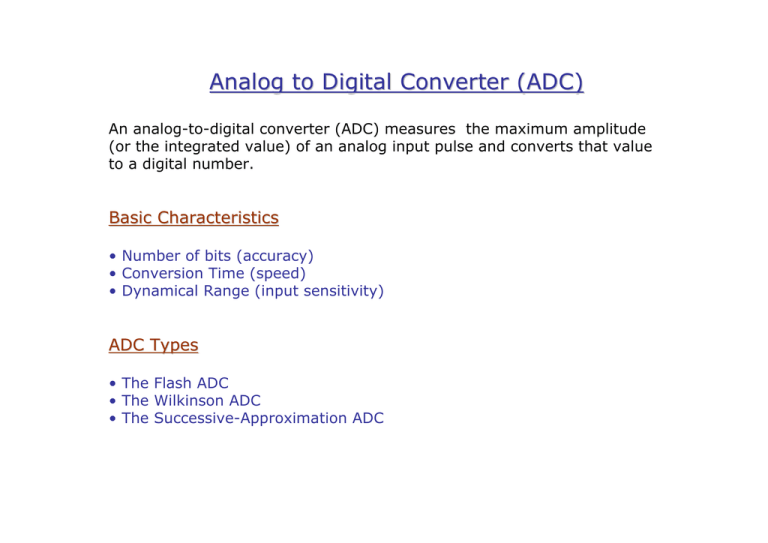Analog to Digital Converter (ADC)
advertisement

Analog to Digital Converter (ADC) An analog-to-digital converter (ADC) measures the maximum amplitude (or the integrated value) of an analog input pulse and converts that value to a digital number. Basic Characteristics • Number of bits (accuracy) • Conversion Time (speed) • Dynamical Range (input sensitivity) ADC Types • The Flash ADC • The Wilkinson ADC • The Successive-Approximation ADC ADC – Basic Characteristics Number of bits n-bit range: The dynamical input range is divided in 2n subdivisions. Example: 12-bit means 212 = 22 × 210 = 4k = 4096 subdivisions (0…4095) ADC speed The frequency of the conversion. Example: f=20 MHz means T = 1/f = 50 ns for each conversion. Dynamical Range The range (in V) of the analog input the ADC can accept. Example: DR=(-5,+5) V means for a 12-bit ADC an input sensitivity of 10 V / 4096 div ≈ 2.5 mV / div (±1/2 bit accuracy) ADC – Types: The Flash ADC The flash ADC is a stack of single-channel pulse height analyzers (comparators) with equal window widths. Advantage • Speed (ns conversion) Disadvantages • Large differential nonlinearity • Limited number of bits ADC – Types: The Wilkinson ADC ADC – Types: The Successive-Approximation ADC CAMAC CAMAC CAMAC Controller DSP CC-488 CAMAC Controller DSP CC-488

